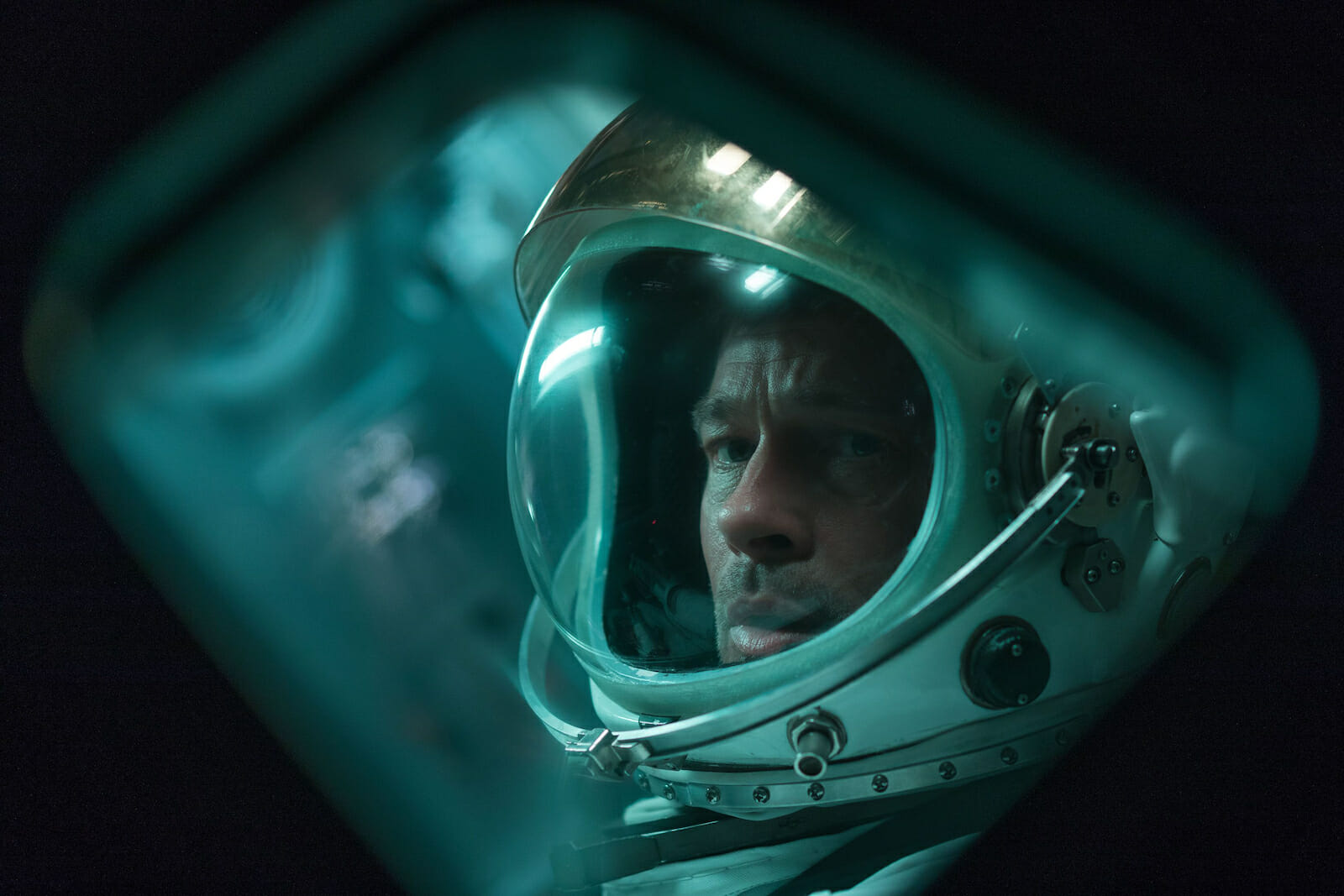
‘Ad Astra’ Review
Astronaut Roy McBride’s pulse rate may never go above 80 bpm, but mine certainly did during the opening sequence of Ad Astra, which features a stunning and spectacular space fall. It’s unlike anything we’ve seen before. Roy has trained his entire life for this work; however, his true mental state is only revealed slowly throughout the film’s run. After witnessing his actions and hearing (through narration) his thoughts, we are left to decide what we think of Roy…stoic hero or simmering psychopath? Either way, he’s haunted by a past that has rendered him mission-focused and the world’s worst party guest. The film takes place in the not-too-distant future.
Brad Pitt stars as Roy McBride, in what may be his career-best (and most inward-looking) performance. Roy is the son of NASA hero Clifford McBride (Tommy Lee Jones), the leader of The Lima Project – a decades-old mission to Neptune tasked with searching for extraterrestrial life. The elder McBride has long been assumed dead with no signals or response signs in many years. A recent power surge that threatens humanity has been traced to Neptune, and now Roy is being used as bait to track down his rogue astronaut father and prevent him from causing further damage.
Roy’s assignment requires him to journey from Earth to the Moon to Mars and, ultimately, on to Neptune. Along the way, he travels with Colonel Pruitt (Donald Sutherland), an old friend of Clifford’s, who is sent along to make sure the son doesn’t acquiesce to the father. Of course, it’s a nice touch to have Tommy Lee Jones and Donald Sutherland together again in a space movie 20 years after Space Cowboys, a more upbeat adventure. Here we see a populated Moon – yet another place we humans have messed up – replete with turf wars. There is also a shootout in a space capsule and an unscheduled stop that provides shocking visuals and causes a shift in the crew.
James Gray, who directed the vastly underrated The Lost City of Z (2016) delivers a space film with terrific visuals and a script he co-wrote with Ethan Gross, that examines how a father can affect the life of his son even when he’s not present. The film has an unusual pace to it. There are a few action sequences, but the core of the film is the psychological state of son versus absent father. Roy’s inability to connect with loved ones is displayed through flashbacks involving Liv Tyler, and it’s his own narration that provides us much more insight than his regularly scheduled psychological tests.
Ruth Negga (Loving) has a nice turn as Helen Lantos, one of the key officials at the Mars space station, and her encounter with Roy provides him with yet more background on his father. It’s easy to recall both Apocalypse Now (only with Tommy Lee Jones as Colonel Kurtz) and 2001: A Space Odyssey given the isolation, questionable mental state, and mission-gone-wrong. The cinematography by Hoyte Van Hoytem (Dunkirk) is outstanding, and never allows us to forget that Roy is in space…with danger present in every moment. The title translates “to the stars,” and it’s true in every sense.
Mr. Gray has delivered a thought-provoking big-budget science fiction film. It has incredible special effects, but the personal story packs even more punch than the galactic adventure. Many will compare this to other space films like Contact, Gravity, and First Man, but this one requires more investment from the viewer, as it’s the character study that resonates. This is Brad Pitt’s movie (he’s in almost every scene), and the ties to his father are never more evident than when he (and we) see The Nicholas Brothers performing in black and white on that monitor. If a daily psychological profile was required for each of us, it would be interesting to see how much work would actually be accomplished. Now, imagine yourself stationed in space and just try to keep your heart rate below 80!

